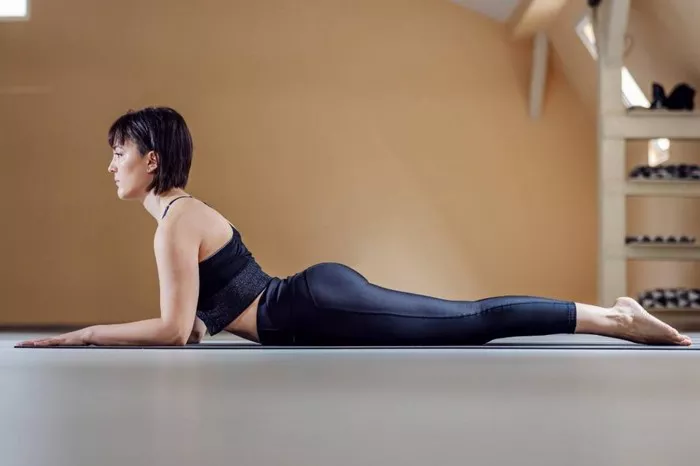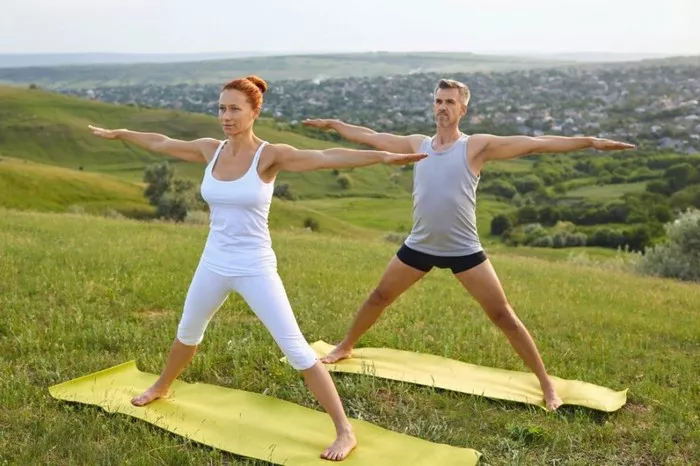Yoga, with its rich history and variety of styles, has been celebrated as a powerful practice that can enhance physical, mental, and emotional well-being. Among the various forms of yoga, Restorative Yoga stands out as a gentle yet profoundly effective practice. It is a style of yoga that emphasizes relaxation, rejuvenation, and deep rest, making it an ideal choice for those looking to alleviate stress, recover from physical exertion, or simply find a break from the hustle and bustle of everyday life.
In this article, we will delve into what Restorative Yoga is, its key benefits, and explore whether it is worth incorporating into your regular wellness routine.
What is Restorative Yoga?
Restorative Yoga is a gentle, nurturing form of yoga that focuses on relaxation and recovery. Unlike more physically intense styles such as Vinyasa or Ashtanga, Restorative Yoga is about slowing down, surrendering to the present moment, and creating space for the body to restore its energy.
In a typical Restorative Yoga class, poses are supported with props such as blankets, bolsters, straps, and blocks, allowing practitioners to relax deeply into the postures without the need for muscular effort. These poses are typically held for an extended period, often 5-20 minutes, to allow the body to open and the mind to quiet.
The purpose of Restorative Yoga is to activate the parasympathetic nervous system—the body’s “rest and digest” system—promoting relaxation, stress relief, and healing. This makes it an ideal practice for those dealing with chronic stress, anxiety, fatigue, or those recovering from illness or injury.
The Key Features of Restorative Yoga
Restorative Yoga is characterized by a few key principles that set it apart from other yoga styles. These include:
Supportive Poses: Restorative Yoga uses props like blankets, bolsters, and cushions to support the body in each posture. This support helps eliminate the need for muscle engagement, allowing the body to fully relax and experience a deeper sense of comfort.
Prolonged Holding of Poses: Poses in Restorative Yoga are held for longer periods—typically ranging from 5 to 20 minutes. This extended time in each posture facilitates the release of deep-seated tension and encourages the body to let go.
Breath Awareness: The practice emphasizes conscious breathing, guiding practitioners to connect with their breath to foster relaxation. Deep, slow breaths help activate the parasympathetic nervous system, promoting calmness and soothing the mind.
Mindfulness and Meditation: Restorative Yoga is often accompanied by elements of mindfulness and meditation. As poses are held for extended periods, practitioners are encouraged to tune into their thoughts and sensations, cultivating a deep sense of presence and awareness.
Slow Pace: Unlike more dynamic yoga styles, Restorative Yoga moves at a slow, steady pace, allowing the body and mind to ease into each posture and fully absorb its benefits.
The Benefits of Restorative Yoga
Restorative Yoga offers a wide array of benefits, both physical and mental. Here are some of the most significant advantages of incorporating this practice into your routine:
1. Stress Relief and Relaxation
One of the most significant benefits of Restorative Yoga is its ability to alleviate stress. In today’s fast-paced world, many people find themselves constantly on edge, juggling work, family, and personal responsibilities. Restorative Yoga provides a sanctuary for relaxation, allowing practitioners to unwind and reduce the effects of stress.
By activating the parasympathetic nervous system, Restorative Yoga promotes a deep state of relaxation. As a result, cortisol levels (the stress hormone) decrease, and endorphins (the body’s natural mood elevators) are released. This shift helps lower anxiety and promotes a greater sense of calm and well-being.
2. Improved Sleep
Because of its deeply relaxing nature, Restorative Yoga can be incredibly helpful for those struggling with sleep issues. The practice calms the mind, soothes the nervous system, and eases muscle tension, making it easier for practitioners to fall asleep and stay asleep.
Regularly practicing Restorative Yoga, especially before bedtime, can help to reset the body’s internal clock and regulate sleep patterns. The restorative poses can also help relieve discomfort that might interfere with restful sleep, such as tight muscles or chronic pain.
3. Enhanced Flexibility and Mobility
While Restorative Yoga is not typically associated with intense stretching or deep physical exertion, it can still help improve flexibility and mobility. Holding gentle, supported postures for extended periods allows the body to open up gradually, releasing tightness and tension.
Over time, the passive stretching that occurs during Restorative Yoga can increase joint mobility, improve the range of motion, and enhance overall flexibility. This is especially beneficial for those recovering from an injury or for older adults who may experience stiffness in the body.
4. Chronic Pain Relief
Chronic pain can be debilitating, and finding effective ways to manage and alleviate it is crucial for maintaining a good quality of life. Restorative Yoga can be an excellent tool for those dealing with chronic pain conditions such as back pain, fibromyalgia, or arthritis.
By focusing on deep relaxation, proper alignment, and gentle movement, Restorative Yoga helps reduce muscle tension and inflammation, which are often the underlying causes of chronic pain. The prolonged holding of supported poses encourages the release of fascia and deep connective tissue, helping to ease stiffness and discomfort.
5. Mental Clarity and Emotional Healing
Restorative Yoga offers a mental and emotional release, as it encourages practitioners to disconnect from external distractions and focus inward. This practice of mindfulness can help clear mental fog, reduce mental chatter, and increase self-awareness.
Many people also report emotional healing through Restorative Yoga. The process of deep relaxation and mindfulness allows individuals to process emotions, release pent-up feelings, and cultivate a sense of emotional balance and resilience. For those going through grief, trauma, or emotional upheaval, Restorative Yoga can provide a safe and supportive space for healing.
6. Better Posture and Alignment
A consistent practice of Restorative Yoga helps improve posture and alignment by encouraging mindful awareness of how we hold our bodies. The supported poses help lengthen the spine, open the chest, and align the pelvis, leading to a more balanced and relaxed body posture.
For those who spend long hours sitting at a desk or suffer from poor posture, Restorative Yoga can help counteract the negative effects of these habits. It can gently realign the body and promote a more neutral, natural posture.
Who Can Benefit from Restorative Yoga?
One of the unique aspects of Restorative Yoga is that it is accessible to almost everyone. Whether you are a seasoned yogi or a complete beginner, Restorative Yoga can be adapted to your individual needs.
Beginners: For those new to yoga, Restorative Yoga offers a gentle introduction to the practice. It provides a non-intimidating environment in which to learn basic poses, breathwork, and mindfulness techniques.
Athletes: Intense physical training can put a strain on the body, leading to fatigue, muscle soreness, and potential injury. Restorative Yoga is an excellent recovery tool for athletes, helping to soothe the body and allow for deep relaxation between workouts.
People with Chronic Pain or Injury: Restorative Yoga’s slow, supported postures make it ideal for those dealing with chronic pain or recovering from an injury. The practice promotes healing, reduces muscle tension, and improves overall comfort.
Anyone Experiencing Stress or Anxiety: Restorative Yoga is a powerful antidote to the stresses of daily life. For those struggling with anxiety, insomnia, or overwhelming stress, Restorative Yoga offers a chance to relax, reset, and restore balance.
Older Adults: As we age, our bodies often experience stiffness, discomfort, and a decreased range of motion. Restorative Yoga is gentle enough for older adults and can help improve flexibility, mobility, and overall well-being.
Is Restorative Yoga Worth It?
In short, yes—Restorative Yoga is definitely worth it. While it may not offer the intensity or fast-paced movement of other yoga styles, its focus on deep relaxation, mindfulness, and recovery can have profound benefits for both the body and the mind.
If you are seeking a practice that will help you manage stress, recover from physical exertion, improve flexibility, or simply provide a much-needed break from the demands of daily life, Restorative Yoga is an excellent choice. Its accessible nature makes it suitable for people of all ages and fitness levels, and its benefits are both immediate and long-lasting.
Incorporating Restorative Yoga into your routine can enhance your overall well-being, improve your mental health, and support physical recovery. If you are ready to give yourself the gift of relaxation and healing, consider exploring Restorative Yoga in more depth. You may just find that it becomes an indispensable part of your wellness journey.
Conclusion
Restorative Yoga is a practice that encourages rest, relaxation, and recovery. It provides a sanctuary of calm for the body and mind, helping to relieve stress, alleviate pain, and promote emotional healing. Whether you are new to yoga or a seasoned practitioner, Restorative Yoga offers numerous benefits that can improve your physical, mental, and emotional health.
For those seeking a gentle, restorative approach to wellness, Restorative Yoga is not just worth it—it may be exactly what you need to recharge and reconnect with yourself.
Related Topics:

















